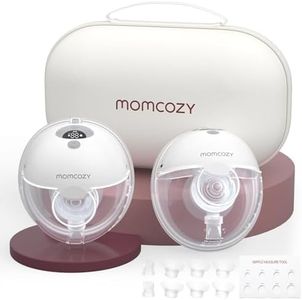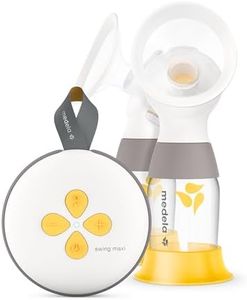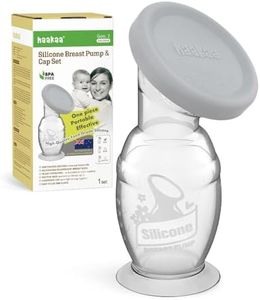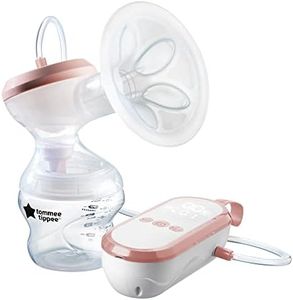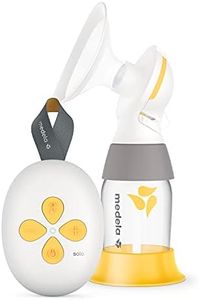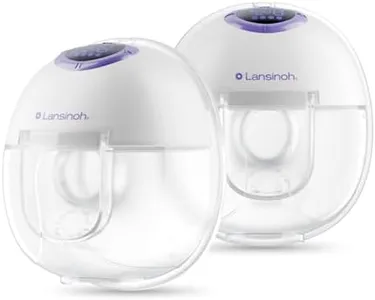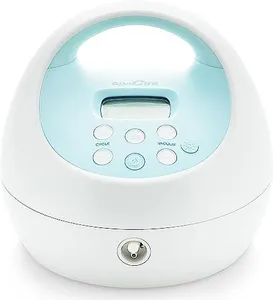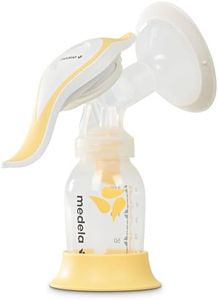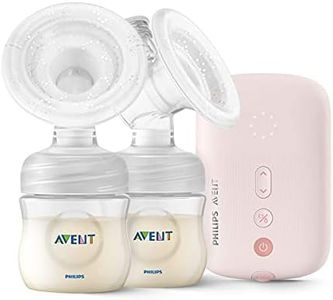We Use CookiesWe use cookies to enhance the security, performance,
functionality and for analytical and promotional activities. By continuing to browse this site you
are agreeing to our privacy policy
10 Best Breast Pumps
From leading brands and best sellers available on the web.Buying Guide for the Best Breast Pumps
Choosing a breast pump can feel overwhelming, especially with so many options available. Picking the right one is mostly about understanding your lifestyle, your baby's feeding needs, and how often you'll be pumping. Are you returning to work, exclusively pumping, or just needing an occasional backup? Consider when and where you'll use the pump, whether you want portability, noise level, or speed. Also, think about comfort and how easy it is to clean the parts—these factors can make a big difference in your daily experience.Pump Type (Manual vs Electric)The type of breast pump refers to whether the pump is manual (hand-operated) or electric (powered by battery or outlet). Manual pumps are usually smaller, quieter, and require you to physically pump, making them well-suited for occasional use or travel. Electric pumps, on the other hand, do much of the work for you and can pump one or both breasts at once, which is better for frequent use or when efficiency is needed. Think about your anticipated usage—if you’ll be pumping daily or multiple times a day, electric is usually more convenient. If you just need a backup or use it infrequently, manual pumps can be sufficient.
Single vs Double PumpSingle breast pumps allow you to pump one side at a time, while double pumps allow you to express both breasts simultaneously. Double pumps save time and can help maintain or boost your milk supply if you're pumping a lot, which is ideal for working moms or exclusive pumpers. Single pumps are more compact and may be fine if you only plan to pump occasionally. Your pumping frequency and need for speed should guide your decision here.
Suction Strength and SettingsSuction strength is essentially how powerfully the pump extracts milk, and settings let you adjust for comfort and effective milk flow. More advanced pumps offer adjustable speeds and suction strengths, simulating a baby’s natural sucking pattern. If you want fast, comfortable, and efficient pumping sessions, a pump with multiple settings can be very helpful. If you have sensitive breasts or trouble with milk flow, customizing suction can make pumping more comfortable and productive.
Portability and Power SourcePortability refers to how easy it is to carry and use the pump on the go, and the power source describes whether the pump runs on batteries, a wall outlet, USB charging, or manual power. If you’ll be pumping at work, traveling, or away from outlets, look for lightweight, compact designs and consider pumps that operate on batteries or USB power. If you’ll mostly be at home, a standard plug-in model could do just fine. Your daily routine is the best guide here.
Ease of CleaningEase of cleaning covers how many parts the pump has and how simple they are to take apart and sanitize. The more complex a pump is, the more pieces need to be cleaned, which can be a hassle with frequent use. Consider how much time you want to spend on cleaning each day. Pumps with fewer parts or dishwasher-safe components can save time and effort, especially for busy parents.
Comfort and FitComfort and fit focus on how the breast shields (or flanges) feel and whether they fit your body properly. The right fit helps prevent pain and gets the best milk flow. Some pumps come with multiple flange sizes, which is helpful because every person is different. If you're unsure, look for pumps offering size options or consult lactation resources. Prioritize comfort, as this will make a big difference in how likely you are to stick with pumping.
Noise LevelNoise level is about how loud the pump is during operation. Quieter pumps are usually preferable if you plan to pump at work, in shared spaces, or around a sleeping baby. If noise would bother you or others, pay attention to user reviews and consider looking for pumps specifically labeled as 'quiet.' If you only pump at home and noise isn't a concern, this may be a less important factor.
